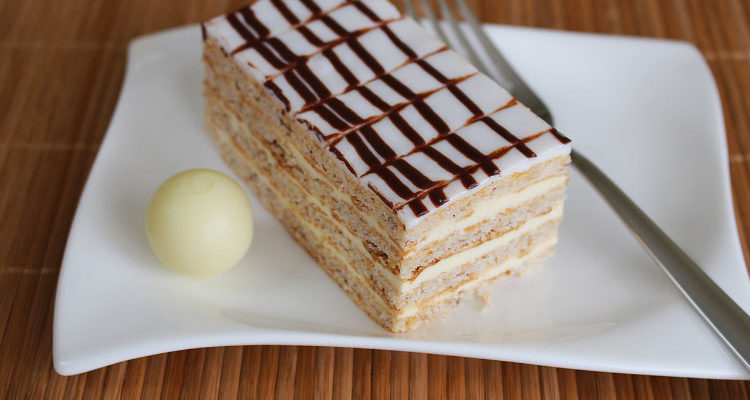Dessert is a course that concludes a main meal. The course usually consists of sweet foods and beverages, such as dessert wine or liqueurs, but may include coffee, cheeses, nuts, or other savory items. In some parts of the world, such as much of central and western Africa, there is no tradition of a dessert course to conclude a meal.
The term “dessert” can apply to many confections, such as cakes, tarts, cookies, biscuits, gelatins, pastries, ice creams, pies, puddings, custards, and sweet soups. Fruit is also commonly found in dessert courses because of its naturally occurring sweetness. Some cultures sweeten foods that are more commonly savory to create desserts.
Sweets were fed to the gods in ancient Mesopotamiaand India and other ancient civilizations. Dried fruit and honey were probably the first sweeteners used in most of the world, but the spread of sugarcane around the world was essential to the development of dessert.
Sugarcane was grown and refined in India before 500 BCE and was crystallized, making it easy to transport, by 500 CE. Sugar and sugarcane were traded, making sugar available to Macedonia by 300 BCE and China by 600 CE. In South Asia, the Middle East and China, sugar has been a staple of cooking and desserts for over a thousand years. Sugarcane and sugar were little known and rare in Europe until the twelfth century or later, when the Crusades and then colonialization spread its use.
Europeans began to manufacture sugar in the Middle Ages, and more sweet desserts became available. Even then sugar was so expensive usually only the wealthy could indulge on special occasions. The first apple pie recipe was published in 1381. The earliest documentation of the term cupcake was in “Seventy-five Receipts for Pastry, Cakes, and Sweetmeats” in 1828 in Eliza Leslie’s Receipts cookbook.
The Industrial Revolution in America and Europe caused desserts to be mass-produced, processed, preserved, canned, and packaged. Frozen foods became very popular starting in the 1920s when freezing emerged. These processed foods became a large part of diets in many industrialized nations. Many countries have desserts and foods distinctive to their nations or region.
Chocolate is a typically sweet, usually brown, food preparation of Theobroma cacao seeds, roasted, ground, and often flavored. Pure, unsweetened chocolate contains primarily cocoa solids and cocoa butter in varying proportions. Much of the chocolate currently consumed is in the form of sweet chocolate, combining chocolate with sugar. Milk chocolate is sweet chocolate that additionally contains milk powder or condensed milk. White chocolate contains cocoa butter, sugar, and milk, but no cocoa solids. Dark chocolate is produced by adding fat and sugar to the cacao mixture, with no milk or much less than milk chocolate.

